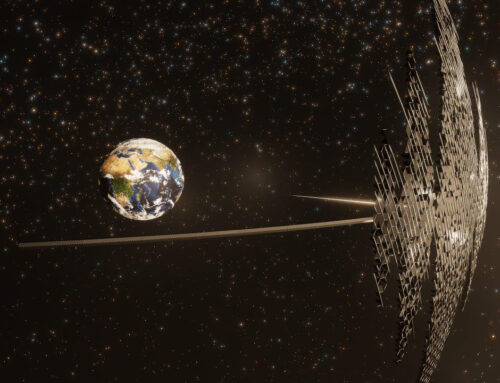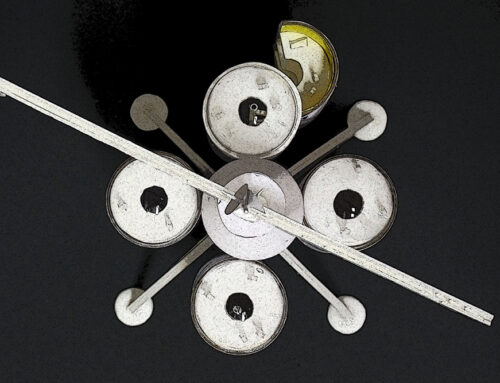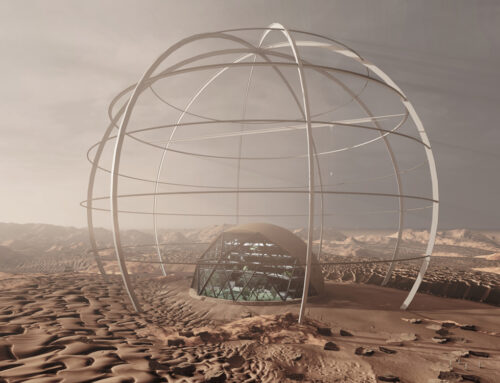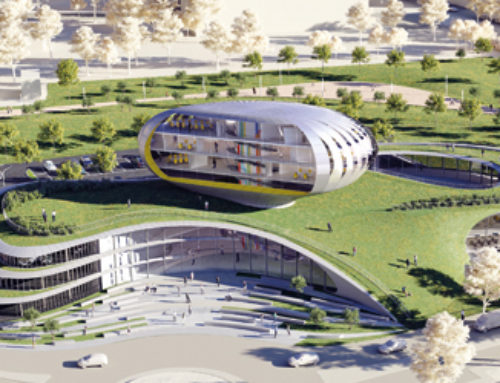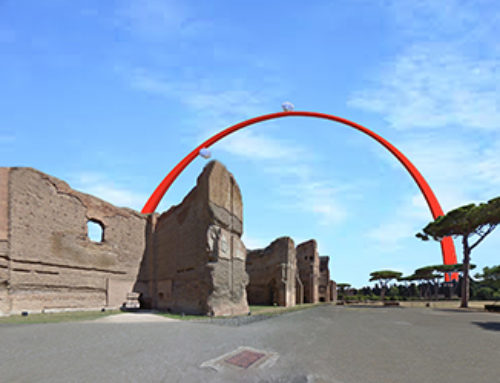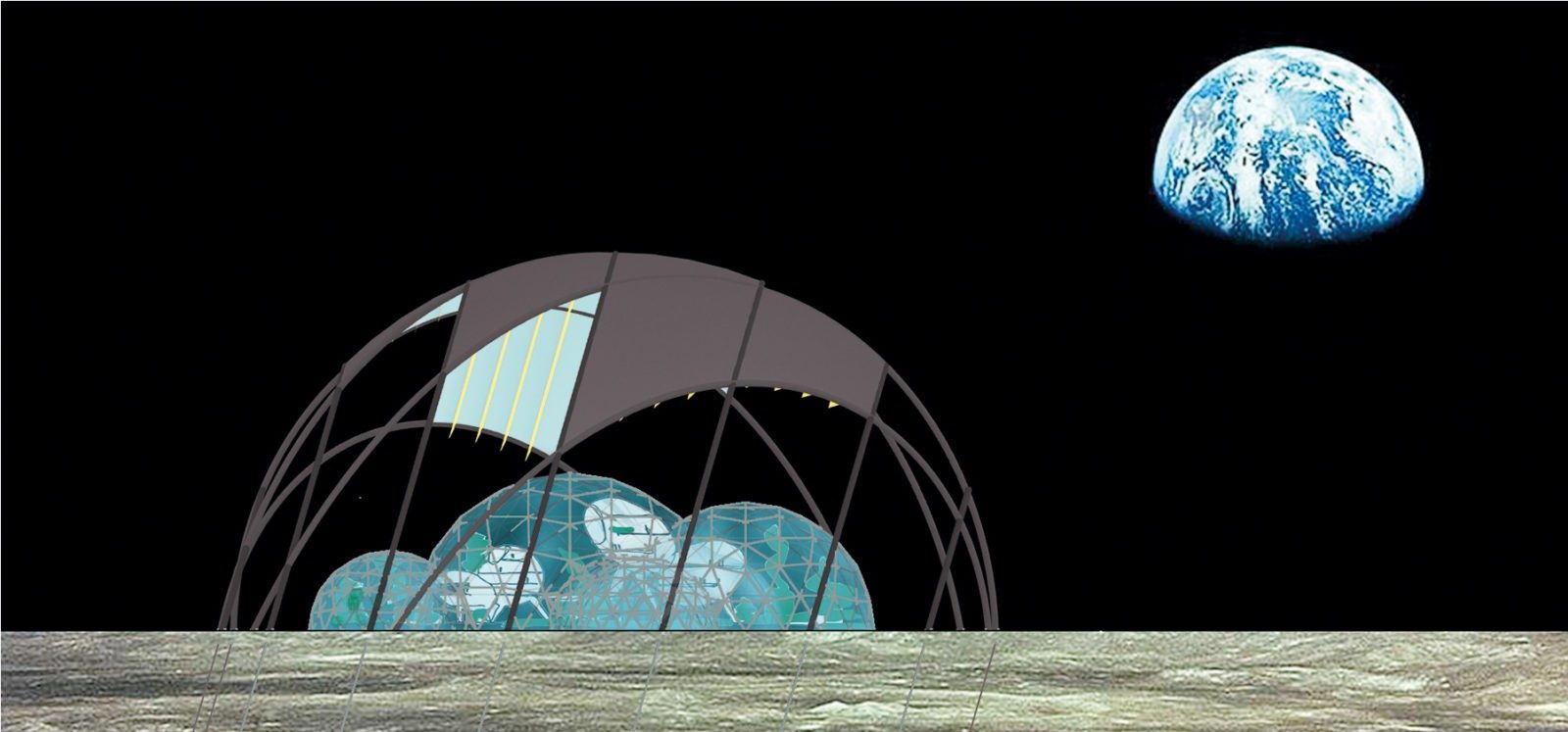
Alongside everyday projects, our studio has been studying new solutions to build human colonies on the Moon and on Mars. We aim to create solutions based on solid research that can find an actual application in a near future.
We developed a project for an extraterrestrial colony made of transparent modules that make it possible to see the sunlight and the outside view. Our idea differs from most concepts presented internationally over the past years, as the majority of proposals are for underground outposts: we believe that these solutions would be dangerous for the physical and psychological human wellbeing.
Our colony will be protected by an artificial magnetic field, which shields the buildings from cosmic radiations and micro-meteorite rain. The entire complex will also be completely eco-friendly thanks to systems for the recycling and optimisation of resources.
Our researches were presented at the 2017 and 2018 AIAA SPACE conferences in Orlando (Florida) and gained a certain interest among the scientific community. They also appeared on several online and printed magazines, including the astronomy/astronautics magazine Nuovo Orione (May 2018).
[In the picture at the top: rendering of a first version of Solenoid Moon Base City.]
Category:
Studies and researches
Year:
2015-2018
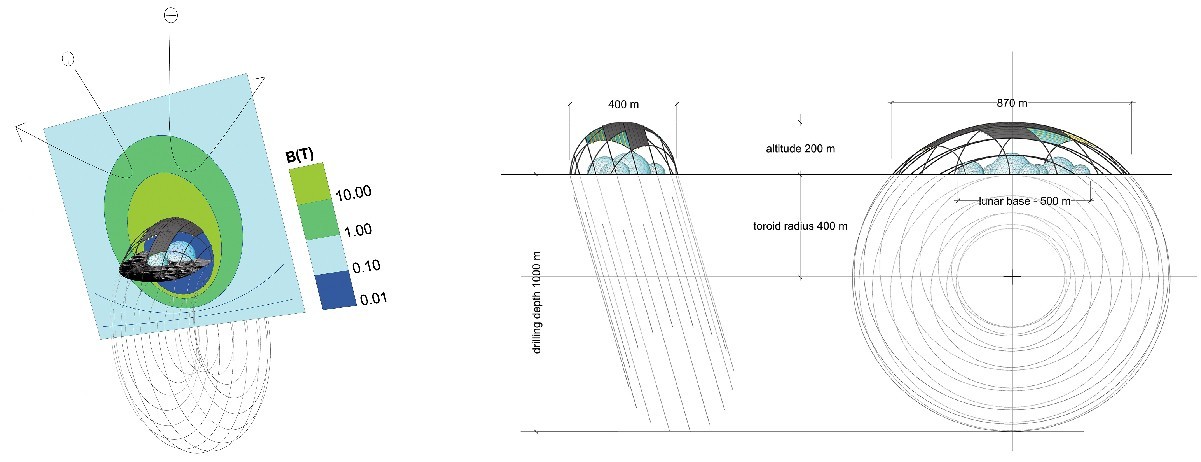
Solenoid Moon Base City
(vertical toroid, 2017)
In this first study for a Moon base we designed a colony located inside a big vertical toroid made of superconducting electrical high-voltage cables, mostly buried under the lunar surface. The toroid can generate an artificial magnetic field powerful enough to repel the damaging ionised particles, but at the same time harmless in proximity of the inhabited area.
The necessary technology for this project is already available on Earth: the residential units can be enclosed in pressurised domes composed of cushions made up of several layers of EFTE and supported by a weaving of wires in traction, while the cables will be put inside curvilinear tubes in VECTRAN inflated with high-pressure.
Solenoid Moon Base City 2.0, 2018
(horizontal toroid, 2018)
In occasion of the IAC Congress of Brema 2018, we presented a new version of the lunar base developed together with a group of researchers (coordinated by Professor Giancarlo Genta from the Polytechnic University of Turin).
The toroid of cables is placed in a horizontal position: the upper part is supported by arches that are organised in the shape of a circle along the perimeter of the torus, while the lower part evolves in underground tunnels under the lunar surface.
The residential domes will be “printed” in situ using the lunar regolith and taking advantage of the structure itself. The cables’ frame will be in fact a component of the printer, with an overhead travelling crane moving along the tracks that coincides with some of the cables. It will be possible to enlarge the settlement over time, printing new units as they will be needed.
The domes will be partially covered at the top in order to protect them from micro-meteorites. They will be transparent only in correspondence with the glass windows, which are built using triangular modules in geodetic configuration and made up of multi-layered and thick windowpanes.
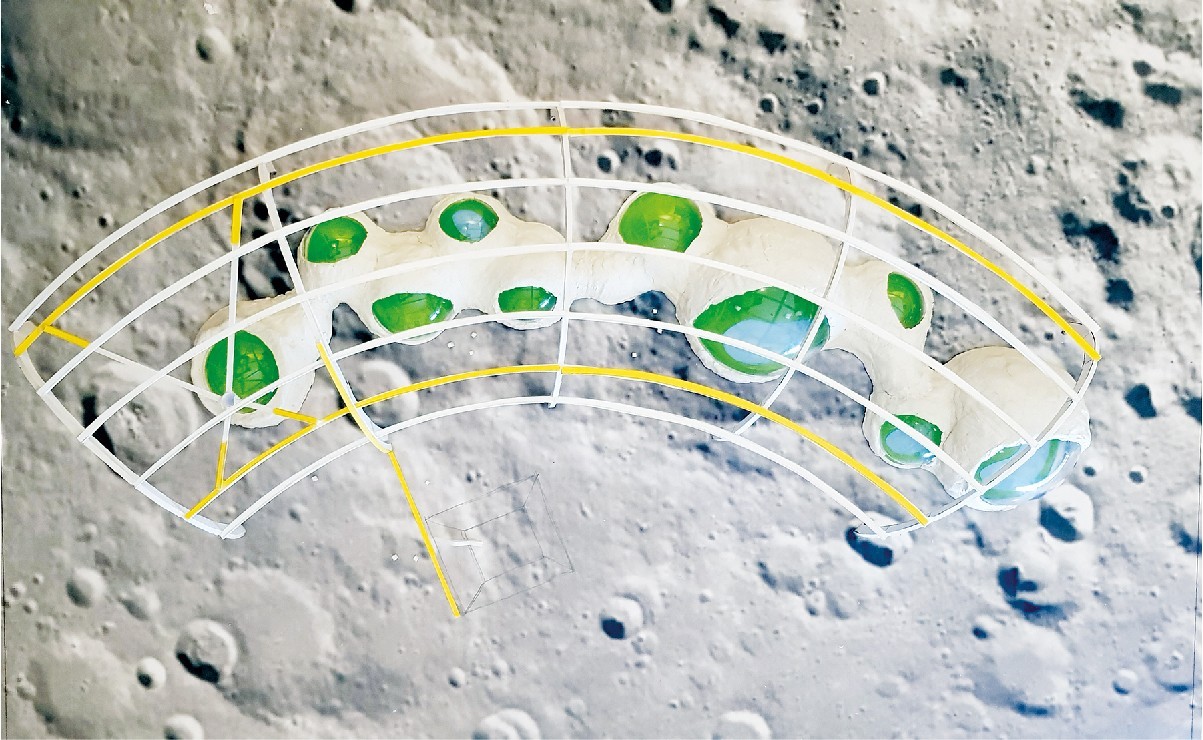
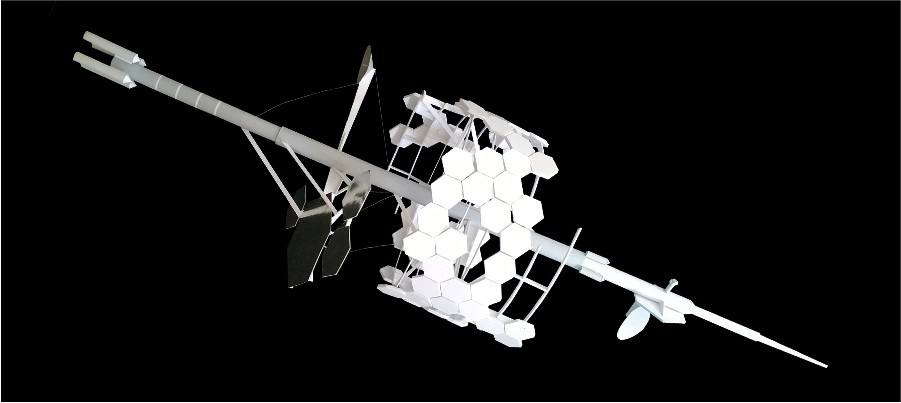
Scale model of a first version of the spaceship.
Studio per
Spaceship project and settlement on Mars (2018)
Even if it has its own atmosphere, Mars is not easy to colonize because of cosmic radiations.
Our project aims to protect both the outpost and the spaceship with an artificial magnetic field. The residential modules of the future base will be moved on the spaceship, and will be positioned in the shape of a cylinder (or geodetic sphere): the rotation of the structure will produce the necessary gravitational force to protect astronauts during the journey.
Once close to Mars, the modules (equipped with descent motors and independent parachutes) will detach from the ship and land on the surface; once on the ground, they will hook one to another, thus putting together the settlement.
The settlers will have the task of installing the electric wires of the toroid to protect the base: the structure will be horizontal so there won’t be the need to dig too deep.
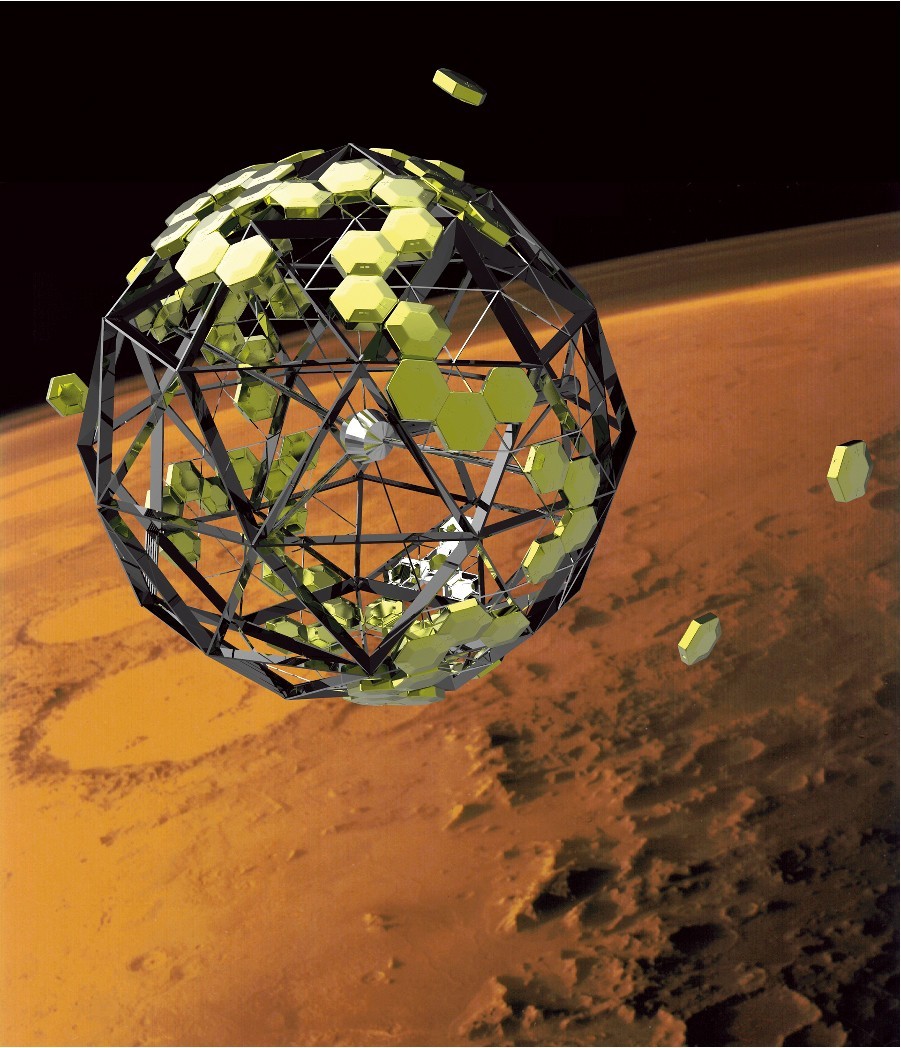
Rendering of the second version of the spaceship. The image shows the residential modules during the phase of detachment and landing on Mars’ surface.
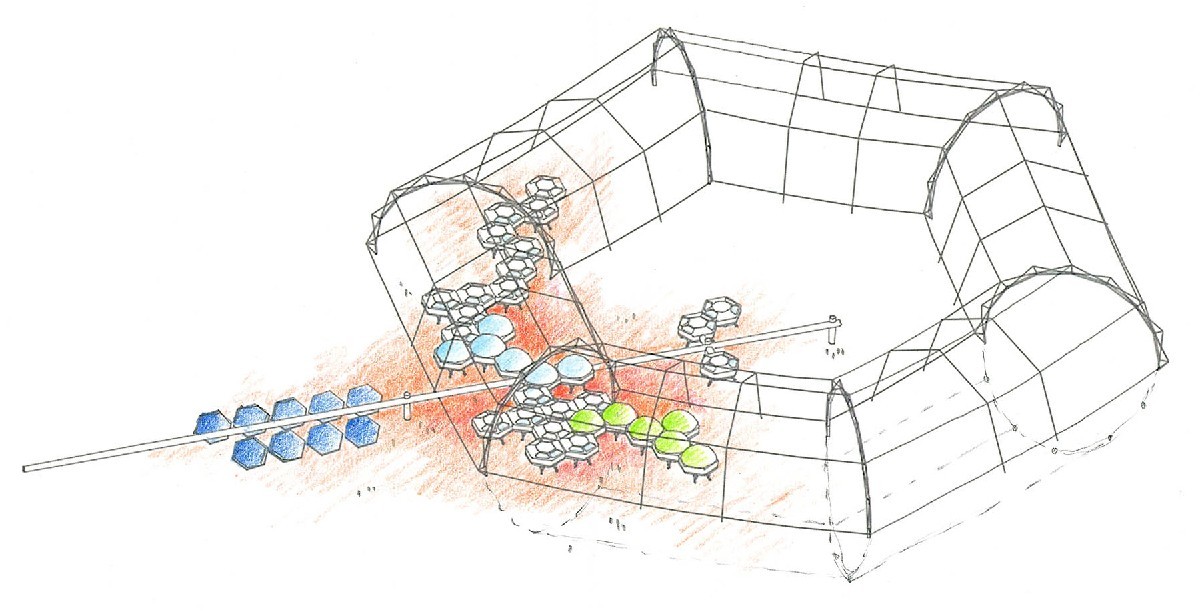
Illustration of the modular settlement, assembled under the cables’ toroid.




